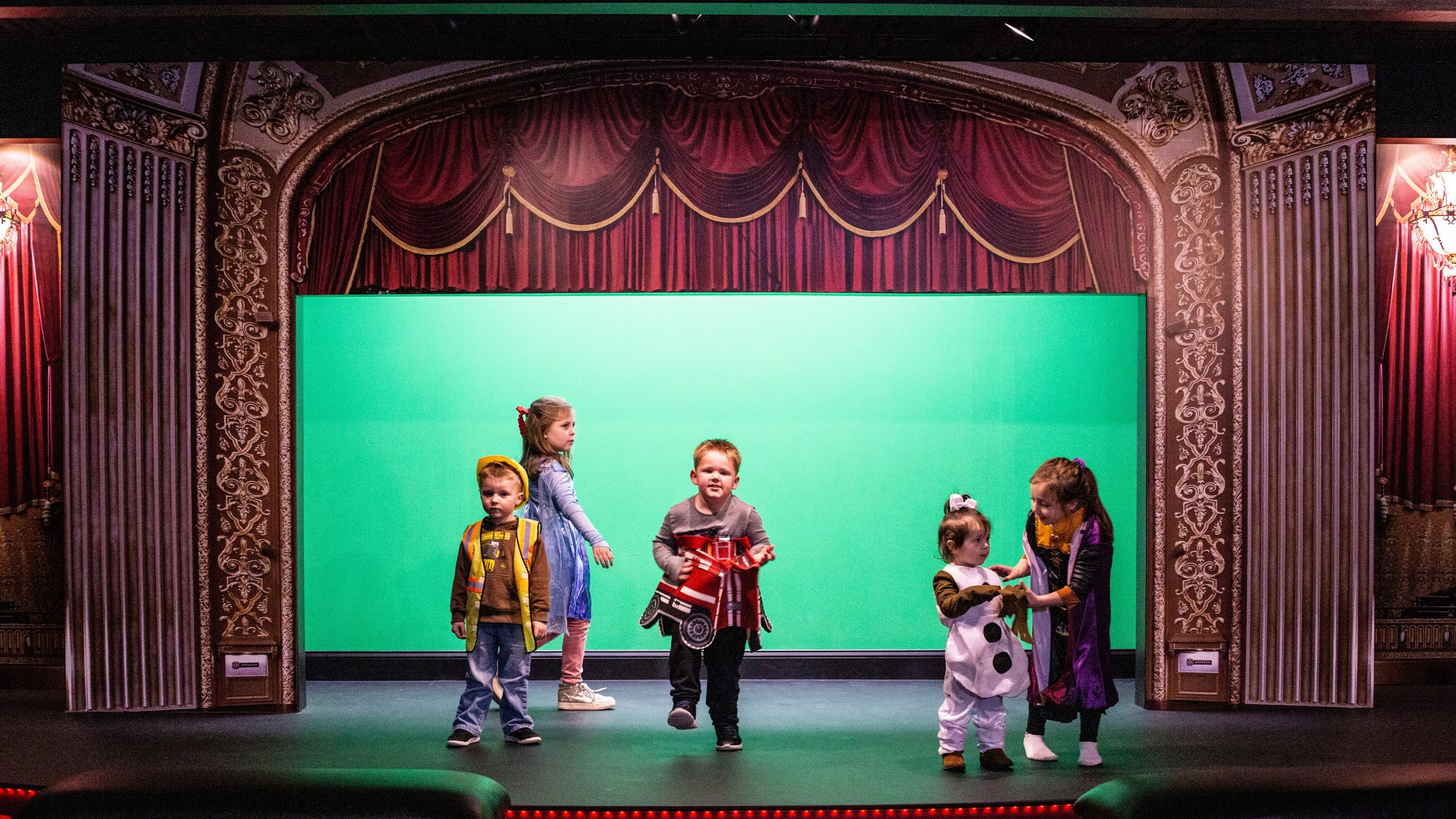This article originally appeared in Volume I, Issue II of StoryBoard Memphis Quarterly in March 2022.
Dr. Stewart Burgess has a clear vision for the exhibits at the Children’s Museum of Memphis (CMOM). A developmental psychologist by training, CMOM’s executive director had a circuitous path to the museum. His trajectory from graduate research on early intellectual skills to managing editor at an educational start-up to the Early Learning Director for the Lower School campuses of St. George’s Independent School has uniquely prepared him for the task of refreshing CMOM’s beloved, and tired, exhibits.
The recently reimagined Art Innovation Lab is a good example of his goal “to redo every exhibit with an eye toward educational underpinnings and overall engagement.” CMOM staff redesigned the old Kids’ Cafe area to be a light-filled artists’ studio featuring long tables set with supplies, easels at the vertical windows, tools for small and large scale sculpting, and a Play’sociate ready to assist. The welcoming design immediately invites children to make choices among the available activities and materials.
Dr. Burgess sees the Art Innovation Lab as a prime place to find proximal zones to help children build upon what they have already mastered. It’s also a place to develop fine motor skills, highlight local artists, and model career options. A hallmark of the new exhibits will be spaces with these types of layered interpretation.
Designing to Learn by Osmosis
One thing that you will not see in the new exhibits is walls awash with bright red, yellow, and blue. “There will be plenty of color, except we won’t have a ton of that early childhood primary color that you see in childcare centers. It’s really over-stimulating for children,” Dr. Burgess asserts. Rather, neutral backgrounds will be a hallmark of the refreshed exhibits. In talking through a potential redesign of the Mississippi River exhibit, he envisions replacing the fish in the water table with catfish species, limiting the print on the wall, incorporating lift flaps to reveal answers, adding urban and farmland play tables, and utilizing turbines to demonstrate hydroelectric power.
The idea is to make it so simple that, as Dr. Burgess says, “You don’t have to read a dissertation while you’re also trying to run after your two-year-old. Even if you are just playing here, you can get [the information] by osmosis.” The goal is for people to go into exhibits and stay in them longer while interacting with more elements than they did in the past.
He plans to center the museum’s mission – The Children’s Museum of Memphis inspires children to explore, imagine, and create – growing minds and filling them with endless possibilities – at the center of every exhibit design.

Designing for Universal Use
A redesign for the river exhibit is in the future, but some exhibits have already received attention. Historically, outside firms have designed and fabricated the museum’s exhibits. In contrast, the new designs will be built in-house. Dr. Burgess is quick to praise the museum’s creative staff, and their work is on view in the redesigned Role Play Theater. In the old exhibit, kids loved seeing themselves on the green screen, but the stage was small and inaccessible for wheelchairs. The original exhibit had white walls, a white two-level drop ceiling, and a blonde wood stage.
Walking into the redesigned exhibit is like walking into the Orpheum. The reoriented stage is set into a wide angle panorama of the theater that creates an immersive environment. The photographed chandeliers seem to glow, the ceiling mimics dark wood paneling, and the carpet is a close match to the Downtown theater’s floors. Dr. Burgess observed, “Aside from being 901 focused, not all of our kids in Memphis grow up going to fancy theaters…I want the first time kids go to a theater to think, ‘Oh, this reminds me of my childhood. This was made for me.'”

The new space also features elements of universal design, which prioritizes designs that should be usable by all people to the greatest extent possible without the need for adaptation or specialized design. The height of the stage and the ramp leading to it were the two most important features for CMOM staff. Wheelchair users and toddlers can get on the stage unaided.
CMOM is partnering with the Orpheum, Germantown Performing Arts Center, Ballet Memphis, and other performing arts companies to promote their family-oriented programming with tie-ins at the museum in an effort to build awareness of the arts.
The museum staff is currently at work renovating half of the under 4 exhibits, with the second half to be completed once the first portion is finished. The key is to ensure that there are always exhibits open for visitors with only a few closed for renovations at any time. The process may be gradual, but the impact is noticeable already.
Designing with research in mind
Dr. Burgess’s dissertation focused on the effects of specific emotions on learning memory. His research and studies from others have found that compared to emotions such as sadness and anger, happiness is associated with a stronger memory for all types of information related to an event.
He believes that the key to education – whether it is in a classroom or a museum – is to make it fun and engaging because kids learn more and retain long term memories about things they enjoyed and felt were fun. Immersive environments that are highly engaging “sets the hook on falling in love with discovery and learning,” which is what the Children’s Museum of Memphis is all about.
Caroline Mitchell Carrico is a native Memphian and, as a historian by training, she enjoys researching the city’s past and pulling it into the present. When she isn’t reading and writing, she can often be found cheering on her kids’ soccer teams.

